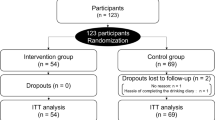Abstract
Making appropriate recommendations for safe drinking behavior among different age groups requires understanding of differences between young and older adults in following them. The purpose of this study was to investigate how drinking behavior in terms of drinking speed and bolus size differs between young and older adults following instructions to change drinking rate. Thirty young (mean age 24.7 years) and 30 older (mean age 66.9 years) healthy female participants were recruited. All participants drank water under different drinking instructions: “as they normally would”, “as quickly as is comfortably possible”, and “slowly”. Results showed that when asked to drink quickly, both age groups increased drinking speed to a similar extent. When asked to drink slowly, older adults were unable to slow their drinking rate as much as young adults (P < .001). When drinking slowly, older adults had significantly larger bolus size than young adults’. These suggest that in a healthcare setting, the often prescribed advice to “drinking slowly” may be insufficient precaution for older patients. Prudence is suggested to carefully observe patients drinking after they’ve been asked to drink slowly, before making a clinical judgment if additional, more specific strategies may be indicated.



Similar content being viewed by others

References
Adnerhill I, Ekberg O, Groher ME. Determining normal bolus size for thin liquids. Dysphagia. 1989;4:1–3.
Lawless HT, Bender S, Oman C, Pelletier C. Gender, age, vessel size, cup vs straw sipping, and sequence effects on sip volume. Dysphagia. 2003;18:196–202.
Nilsson H, Ekberg O, Ollson R, Kjellin O, Hindfelt B. Quantitative assessment of swallowing in healthy adults. Dysphagia. 1996;11:110–6.
Hughes TA, Wiles CM. Clinical measurement of swallowing in health and in neurogenic dysphagia. QJM. 1996;89:109–16.
Speirs RL, Staniforth A, Sittampalam G. Subjective assessment of liquid volumes by humans during swallowing. Arch Oral Biol. 1988;33:701–6.
Bennett JW, Van Lieshout PHHM, Pelletier CA, Steele CM. Sip-sizing behaviors in natural drinking conditions compared to instructed experimental conditions. Dysphagia. 2009;24:152–8.
Sheth N, Diner WC. Swallowing problems in the elderly. Dysphagia. 1988;2:209–15.
Shaw DW, Cook IJ, Gabb M, Holloway RH, Simula ME, Panagopoulos V, Dent J. Influence of normal aging on oral-pharyngeal and upper esophageal sphincter function during swallowing. Am J Physiol. 1995;268:G389–96.
Sonies BC, Parent LJ, Morrish K, Baum BJ. Durational aspects of the oral-pharyngeal phase of swallow in normal adults. Dysphagia. 1988;3:1–10.
Logemann JA, Pauloski BR, Rademaker AW, Colangelo LA, Kahrilas PJ, Smith CH. Temporal and biomechanical characteristics of oropharyngeal swallow in younger and older men. J Speech Lang Hear Res. 2000;43:1264–74.
Tracy JF, Logemann JA, Kahrilas PJ, Jacob P, Kobara M, Krugler C. Preliminary observations on the effects of age on oropharyngeal deglutition. Dysphagia. 1989;4:90–4.
Robbins JA, Sufit R, Rosenbek J, Levine R, Hyland J. A modification of the modified barium swallow. Dysphagia. 1987;2:83–6.
Baum BJ, Bodner L. Aging and oral motor function: evidence for altered performance among older persons. J Dental Res. 1983;60:2–6.
Crum RM, Anthony JC, Bassett SS, Folstein MF. Population-based norms for the mini-mental state examination by age and educational level. JAMA. 1993;269:2386–91.
Urbaniak GC, Plous S. Research randomizer. http://www.randomizer.org/form.htm (2010).
Jaradeh S. Neurophysiology of swallowing in the aged. Dysphagia. 1994;9:218–20.
Gleeson DCL. Oropharyngeal swallowing and aging: a review. J Commun Disord. 1999;32:373–96.
Rademaker AW, Pauloski BR, Colangelo LA, Logemann JA. Age and volume effects on liquid swallowing function in normal women. J Speech Lang Hear Res. 1998;41:275–84.
Ekberg O, Olsson R, Sundgren-Borgstrom P. Relation of bolus size and pharyngeal swallow. Dysphagia. 1988;3:69–72.
Author information
Authors and Affiliations
Corresponding author
Rights and permissions
About this article
Cite this article
Yang, Y., Leow, L.P., Yoon, W.L. et al. Relationship Between Age and Drinking Instructions on the Modification of Drinking Behavior. Dysphagia 27, 210–215 (2012). https://doi.org/10.1007/s00455-011-9355-z
Received:
Accepted:
Published:
Issue Date:
DOI: https://doi.org/10.1007/s00455-011-9355-z



